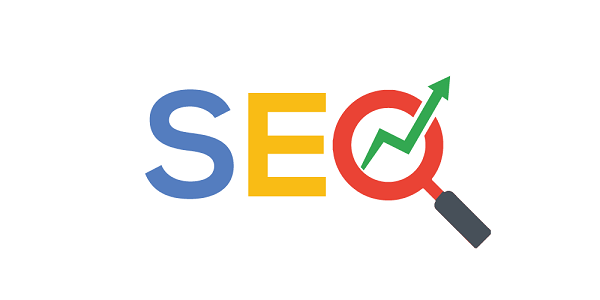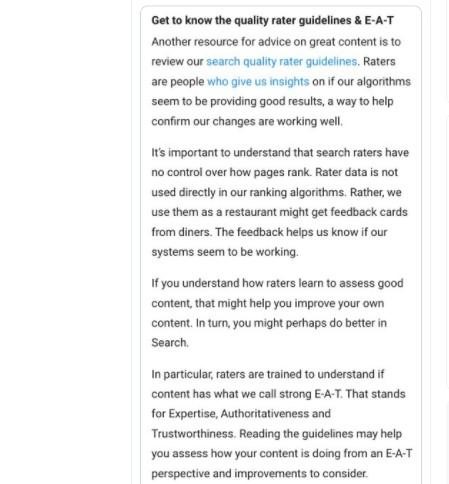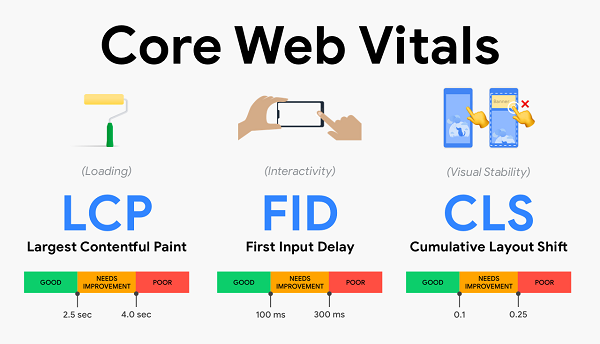Search engine optimization has always been in the stage of permanent development. Search engine algorithms are constantly being improved, which provokes optimizers to take appropriate measures. Google is a mysterious machine, no one except the developers themselves knows exactly how it works. Yes, almost every year there are hypotheses of algorithms that border on 100% probability. But still, all the information remains hypotheses and guesses.
The problems are also added by the fact that by the current 2022 Google has seriously stepped forward, almost completely redone its approach, compared with the trends of 5-6 years ago. And many marketers and SEO optimizers started talking about the fact that search engine optimization is dead. There is no point in using tactics and strategies, you just need to create good sites for users. And all artificial measures no longer work, and web traffic is incrementally dying. And SEO first of all appeared thanks to it.
So does SEO work in 2022? Is it worth spending time on optimization, or just focusing on the pressing user problems on the site? We know that a significant part of affiliate marketing affiliates pours traffic to offers from their sites. And the topic is topical for them. That’s why we’re taking it apart today.
Table of contents
What are our conclusions about SEO in 2022 based on

As already mentioned, SEO is difficult to analyze, because no one reveals the algorithms of search engines. But famous optimizers don’t even think to agree. They split into two camps. The first half claims that SEO hasn’t changed much, so it’s worth working on the old tactics. The second half advocates a complete restructuring of the structure and content of resources for 2022.
We decided to be objective. The main research of specialized resources, analytics from Sitechecker, Kokoc, and many other projects were taken as sources. Reviews by Kevin Indiga from Shopify, Mindy Weinstein from Market Mindshift, Izzy Smith from Write, and other big names in SEO. As well as the opinion of thousands of optimizers participating in surveys. We have passed it all through the prism of our own opinion, systematized, and voila – we have prepared the basic tactics and techniques that will not work normally in 2022, and those that will surprise you with their effectiveness.
SEO tactics that don’t work in 2022
Techniques and tools that are overestimated, the effectiveness of which falls already at a certain distance, with a high probability continue to move down. For some of them, it is quite possible to get pessimization from Google. So, it is not worth focusing your attention on them in the new year.
Cheating behavioral characteristics
This is a common set of various metrics that demonstrate to the search engine that users like the resource. Again, it is difficult to name the exact list. But the following indicators relate to it:
- the depth of the page view. That is, to what level of attachments from the second-level domain the user enters in the search for information on the site. The further he goes from the page he got to from a direct search, the better;
- the number of pages viewed in total;
- the total time that the user spent on the site;
- performing various actions that are treated as conversions. For example, filling out a product purchase form;
- low instant failure percentage. That is the fewer users who leave the resource immediately after the transition, the better.
All these indicators can be wound up both naturally and artificially. By improving site navigation, breaking down information into blocks and sections, and improving the quality of content, you work naturally. But the use of special programs and services that either deceive the counters of the search engine or mislead users, forcing them to «walk in a circle» is considered artificial measures. And in 2022 they lost their effectiveness. Search engines began to actively and quite simply identify such manipulations, imposing sanctions on resources using the services. So, instead of the growth of the site, it will inevitably begin to fall. The tool doesn’t work.
Content for the traffic

That is strictly optimized articles that don’t answer the question posed.
As an example, consider this text. What will happen if you optimize it for a huge number of key queries, not only about SEO in 2022 but for example, how to pour traffic to the gamble? The user who clicked on the second key won’t find an answer here. And he will search further by scrolling through the text fluently. And if, instead of describing specific working and non-working tactics, we brushed off the reader with general phrases, like «you should work harder on content», then the search engine would also notice that readers leave dissatisfied.
Moreover, even 10 years ago, useless content worked. And now, take a look at the copywriting exchange. In almost every order, optimizers strictly set the task – to give a complete answer to the question posed.
Site re-optimization (over spam) with keys
It should be immediately clarified that over-spam is a strange beast. There are generally limits, for which it is not worth stepping in. But in some texts they are lower, in others, they are higher. According to the standard, it isn’t necessary to allow spam with the main key more than 4-5% of the total number of characters. Follow this border, you will not fall under sanctions. But there are nuances, for example, for some texts, especially technical topics, such a limit is much higher, up to 6-8%. Moreover, there are other indicators of spam and classical and academic nausea. That is the number of repetitions of words in absolute values and percentages. And if the classical parameter is important only for texts of less than 2-3 thousand characters, then the academic parameter is suitable just for large texts. It should be kept within the range of 4-10%.
By the way, Google has learned to more accurately recognize and adapt the forms of words and phrases. That is if earlier for the request «buy a microwave oven quickly cheap with delivery» the most relevant SERP was the text where the specified key is included in the exact word form, now everything is different. Such a formulation kills the artistry of the text, clearly demonstrating that it is purely optimized, not designed for accurate and detailed information. So, the exact wording won’t be in the first place in the SERP (if you don’t take it in quotation marks, of course). On the contrary, there will be more readable, but fewer spam texts that answer this question.
A lot of low-quality links
Take not quantity, but quality. That’s the only way now. To buy a hundred cheap links from sites with about zero citation, which also thematically don’t fit the content of the site – such an action now doesn’t bring profit at all. One link from an authoritative and, most importantly, thematically relevant site will give more. Perhaps it will be even more expensive, but this is rare. If you scrupulously select links for purchase, choose purely suitable projects, and not automatic programs – you win.
Accordingly, ad links from bloggers, coupled with commercial articles, are becoming more and more relevant.
Uncertain factors
Let’s move on to the tools that sometimes demonstrate effectiveness, sometimes not. And on their account, the opinions of marketers differ directly polar. Some advocate «for», others «against». Everyone is looking at their narrow sample of examples, which is biased. And a global sample of surveys gives about 50% efficiency. Therefore, the following tools can be used in 2022, but you should not bet 100% on them.
E-A-T

Expertise, credibility, reliability. A relatively new parameter of the search engine is designed to assess how competent the author of the content is in the issue under discussion. Can he rightfully give recommendations, does he understand the issue.
In addition, many SEO specialists still cannot come to a consensus on whether the factor affects the ranking, as such, whether it is an SEO parameter. And although the developers themselves have already clearly outlined their position on Twitter, discussions remain.

But, even if we take into account the developers’ twit, the factor still affects the definition by Google assessors. Therefore, it should not be excluded. But again, only in some areas. That is, if you are running a project with a compilation of kawaii anime pictures, then the parameter doesn’t matter to you. Who knows which pictures are kawaii and which are not, everyone has different tastes. But if you write analytical articles on the forecasts of price fluctuations of cryptocurrencies, then the parameter becomes more important. But here, again, you may have your own opinion. This is acceptable. There are areas where a double interpretation is harmful. Technical articles, medical texts, and so on. Their E-A-T is needed and important.
Response blocks
Optimizing websites for Google response blocks is a twofold practice. Here the opinions of optimizers differ radically. Some argue that the search engine steals traffic from the resource, closing its question simply on the search results, not giving a «walk» on the site. Others argue that optimization for response blocks seriously affects the relevance not only for a specific request but also for related ones too.
The following situation turns out. On the one hand, this is an extra difficulty, a lot of technical tasks and work. And as a reward, you get traffic that closes on search results and, with rare exceptions, doesn’t get to the site.
On the other hand, this is a good way to compete for high-frequency if you are just a little short of the TOP 10. Many experts claim that such a scheme works for small projects. But it confuses the maps for large resources, depriving a serious share of traffic, which would have been interested in the project even without the block of answers.
Most likely, this is the most balanced position, optimization for response blocks is needed when you have serious difficulties with issuing the required queries. Again, flagship resources are not the main pain.
Page loading rate

It seems that the parameter has always been one of the most important. And he influenced the usability of the site directly, so increasing the download speed is a plus to relevance, credibility, and karma. Is it so? Yes, it was. But something new happened, more specifically, Core Web Vitals. This cumulative metric completely changes the approach. At least, according to the initial tests, the technology was presented only in 2020 and they have not been able to analyze it until the end.
Accordingly, whether it is worth working on the download speed now or just paying attention exclusively to Core Web Vitals is an open question. And optimizers here, according to the old tradition, were divided into two camps. Some say that the download speed remains an important metric, others don’t pay attention to it.
No errors in the text content
Again, Google’s official position is that neither grammar, spelling, nor punctuation matters for ranking. The search engine doesn’t enter any checks. And it’s true. But there is a second point, the presence of a large number of obvious errors worsens the user experience. Yes, typos are found even in reputable famous publications, no one has ruled out the human factor. But a typo is easy to distinguish from an error by a knowledgeable person. And seeing the obvious illiteracy of the author, he is unlikely to want to receive expert advice from him or, in principle, read his content.
Again, the ambiguous situation. Grammar and spelling affect the user’s attitude, but don’t affect the attitude of the search engine. But the user’s attitude affects the attitude of the search engine.
Accordingly, it is worth paying attention to text checks, but it’s up to you to decide which resources to allocate for this. Whether to check the text fluently or hire a division of professional proofreaders. Objectively, this factor is important for those authors who are simply not familiar with the rules of their native language. That is, a large number of obvious errors are affected.
SEO tactics that work in 2022
So we got to the most delicious. Now we will go through the tools and tactics that will give a good profit in 2022. At least at the end of 2021 and early 2022. If the situation suddenly changes, we will notify you with a new review.
Core Web Vitals

He works. It is clear exactly how, but the optimization requirements are slightly vague. Google has published a 150-page document with general recommendations. But the fact is that they are quite common. The use of special services to improve the download speed, and adapt the layout of the site to the pace of interaction. That is, at the maximum rate of interaction with the first element on the page, the layout shouldn’t be deformed during loading.
For these purposes, you can use PageSpeed Insights or Lighthouse, as well as other ways. AMP is good at his job. Web Vitals also demonstrates good indicators. That is, the angle of the work is approximately clear, but no one provides a clear algorithm. So, this is another field for experiments.
Optimization for mobile traffic

The amount of mobile traffic is steadily growing. In some countries, it reaches 98%. So, it is obvious that the display of a resource for mobile users becomes not only significant, it is more important than working for a desktop as such.
Accordingly, this is not even a way to further improve the indicators in the search engine, this is, in principle, the main angle of work. You need to create a project initially for mobile users, and after that optimize it for the desktop. Perhaps, conservatives won’t like such trends, but these are the realities.
By the way, not only desktop traffic is gradually dying out, but also, in principle, web traffic. In China, for example, already more than 90% of all search queries occur through web apps, and not through browser-type search engines. Apropos, this is also why many optimizers are beginning to believe that SEO is gradually dying. But this is not quite true, rather the angle changes, even the platform, but no more.
Internal linking
This is both a method of natural cheating of the behavioral factor and a direct impact on the positive assessment of search robots. Competent linking has been appreciated at all times. But in recent years, its importance has become stronger. But the main thing to remember about the relevance of internal links. This is an important parameter for a positive user experience. You don’t impose additional transitions on them, but honestly offer, and provide a service.
For example, in the previous paragraph, we talked about optimizing the site for mobile traffic. And if this topic is interesting to you, then we have prepared a detailed analysis of the construction of competent landing pages for mobile users. Review here, if you want to continue studying the issue, please.
Quality links
As we have already said, non-thematic links from low-grade resources have stopped working from the word at all. But quality links from reputable sites, which at the same time have a thematic correspondence with your content, on the contrary, are starting to work better. So, if you are used to purchasing a reference mass, do it manually. Carefully choose where and in what context the link should be.
Systematic updating of content
And «systematic» is the main word here. The content on the resource or attached blog must be updated constantly. But preferably not in jumps, but as evenly as possible. 2-3 texts per week or 20-30 texts, it all depends on the requests and the size of the resource, the number of visitors. But to issue 20 new pages at once, and then go into «silence» for a couple of weeks is not the best option. Also, static sites that are filled with content, and then frozen for six months (so that Google tries it out) don’t work. He won’t try it out, you need to update the content constantly.
And if according to the tradition of gray SEO, you have thrown spam content on the project without a normal semantic load and give the site time for Google to evaluate it, then this is a dead number. The site doesn’t pop up on the first lines of low-frequency, as it could have been ten years ago, in a couple of months. He never pops up again.
Structuring
Clear gradation by sections, competent navigation, and well-thought-out levels of investments. The site needs to be built according to the most classical architectural practices so that it is convenient, divided into floors, and transparent. We also don’t forget about the transition to the maximum of 2-3 clicks on any page. So, the most thematic similar content pages are always compiled into groups, divided into a catalog, and so on.
It is also not necessary to divide too much, otherwise, the user may simply get confused. And as a result, this will affect the behavioral factor. But even too small a gradation is still better than the absence of a normal structure at all.
Search intent
This is the intention of the user, which he possesses when he enters a particular search query. That is, his real desire, and not how he voices it. When a client writes: «holiday gifts», what is he looking for?
- gift ideas;
- gift shop;
- how to make gifts with your own hands.
The key intent is buying gifts, he needs a store. For ideas, he would add the appropriate word, as for the third point. If a person writes: «Bosch washing machines», he wants to buy them, and not find a repair service.
The essence of the parameter is to optimize the content for the intent of the request, not the request itself. Filtering out garbage requests from the semantic core will lead to you, irrelevant users. This will close several issues at the same time.
- you will get more relevant users, customers;
- you will free up space in the core for the necessary queries by removing the garbage;
- you will improve the behavioral factor, which means you will receive special favor from the search engine.
Conclusion
Who said SEO is dead? No, more alive than all the living. Yes, some old techniques, as you can see, are gradually dying out. Others gain a second life. New tactics are settling in, optimizers are starting to be friends with them.
That is, SEO is changing, but not dying. It’s too early to write it off, you just need to keep up with the times, and keep up with new trends. So far, we are only predicting what they will be in 2022. But it is already clear that it is necessary to work primarily for the user, and not for the search engine. This is the only way to get good positions in search results.




